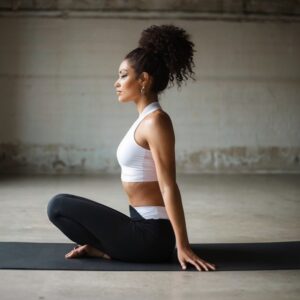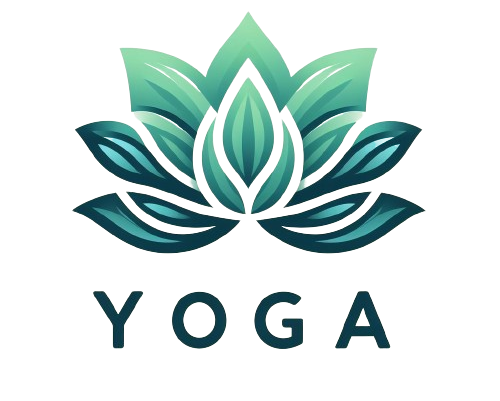Hey there! Let’s chat about something that’s been turning heads in both the fashion and wellness worlds: Yoga fashion. Gone are the days when yoga outfits meant just grabbing an old tee and some stretchy pants. Now, it’s all about merging comfort with style, even while doing downward dogs and sun salutations.
Comfort Meets Style

When it comes to finding the perfect blend of comfort and style for your yoga practice, the secret lies in seeking out apparel that marries practicality with visual appeal. High-waisted leggings emerge as a standout choice in this regard. They offer the support needed for a range of movements and come in an extensive array of designs and patterns, allowing you to express your personal style uniquely. The benefits of these leggings extend beyond their aesthetic appeal; their high waistbands provide extra coverage and can help in maintaining posture and alignment during various poses. But why stop at leggings? Complement them with a breathable, fitted top designed to move with you. Unlike loose garments that might cover your face during forward bends or distract you during inversions, these tops are made to stay in place, ensuring your focus remains on your alignment and breath. Expand your horizon beyond basic tanks to discover a world of yoga tops that includes cropped tees, stylish bras, and even supportive bodysuits. Each of these options is crafted with yogis in mind, featuring materials and cuts that enhance airflow, manage sweat, and move seamlessly with your body, making your practice both comfortable and stylish.
Fabric that Feels Good
In yoga apparel, the choice of fabric is important in ensuring comfort and the efficacy of your practice. It’s essential to understand that fabrics vary greatly, and selecting the right material can significantly enhance your yoga experience. Breathable, moisture-wicking fabrics stand out as the ideal candidates for yoga wear, especially designed to keep you cool and dry, proving invaluable during vigorous sessions or the sweltering conditions of hot yoga classes. Among these materials, bamboo stands out for its naturally soft texture and its ability to offer breathability, which helps in regulating body temperature. Organic cotton is another favored choice, renowned for its softness and comfort and for its sustainability and reduced environmental impact, aligning with the eco-conscious ethos that many yogis adhere to. Recycled polyester, made from post-consumer plastic bottles, is a testament to how sustainability can be merged with functionality. This fabric is durable, resistant to shrinkage and wrinkles, and excellent at wicking away sweat, making it another great option for those looking to combine environmental responsibility with their fitness wardrobe. Together, bamboo, organic cotton, and recycled polyester represent the forefront of eco-friendly and comfortable yoga apparel, offering practitioners a choice that feels good on the skin and supports a more sustainable practice.
The Right Shoes (Or Lack Thereof)
In the world of yoga, the question of what to wear on your feet can be as significant as choosing the right type of mat. While the foundations of traditional yoga practices promote conducting sessions barefoot as a means to enhance your connection with the Earth and to stabilize your stance more effectively, modern alternatives like yoga socks and minimalist shoes have carved out their own niche. These alternatives are designed to cater to the needs of those who, for various reasons, might not find going barefoot appealing or practical. Yoga socks, for instance, come equipped with grip-enhancing features such as rubber dots or patterns on the soles, offering improved traction that prevents slipping on the mat. This added grip ensures that practitioners can maintain poses with the same level of stability as they would barefoot, but with the added benefit of warmth and hygiene, particularly crucial in cooler climates or in shared studio spaces where the cleanliness of the floor might be a concern. Minimalist shoes, on the other hand, provide a barely-there feeling with thin, flexible soles that protect the feet while allowing for a range of motion and sensation very close to that of being barefoot. These shoes are specifically designed to mimic the natural shape and flexibility of the foot, ensuring that the practitioner can feel connected to the ground without the barrier of traditional footwear, yet protected against potential hazards. Both yoga socks and minimalist shoes represent a thoughtful compromise, allowing practitioners to enjoy the benefits of grip, hygiene, and protection without significantly compromising their tactile connection to the earth—a crucial element in yoga’s physical and spiritual balance.
Accessorizing Your Yoga Look
Your yoga mat is an extension of your practice and, believe it or not, your style. Beyond colors and patterns that resonate with you, look for mats with the right grip and cushioning to support your practice. There’s a wide range of eco-friendly options available now, too, from natural rubber to cork.
A stylish, functional yoga bag isn’t just for carrying your mat; it’s for toting all your essentials—blocks, straps, water bottle, and more. And speaking of blocks, they’re not just practical tools for deepening stretches; they also come in various materials and colors to match your personal taste.
Sustainable and Ethical Fashion Choices
Embracing the yogic principle of Ahimsa, which emphasizes non-violence and compassion, extends beyond our actions and into the choices we make regarding our consumption, including the selection of our yoga apparel. In an era where the fashion industry is often scrutinized for its environmental impact and labor practices, selecting yoga wear becomes a practice of mindfulness in itself. It’s important to support brands that are committed to ethical labor practices, ensuring that their workforce is treated fairly and works in safe conditions, and to sustainability in their choice of materials and manufacturing processes. This dual focus helps in mitigating the fashion industry’s footprint on the planet by reducing waste, lowering emissions, and conserving natural resources, while also ensuring that workers along the supply chain are respected and adequately compensated.
When we choose brands that prioritize organic, recycled, or sustainably sourced materials, we contribute to lessening the demand for virgin resources, which often come with high environmental costs. By supporting companies that employ eco-friendly production methods—such as reducing water usage, minimizing chemical dyes, and choosing energy-efficient manufacturing—we help promote a market that values the planet as much as profits. This conscientious approach to selecting our yoga attire contributes to a healthier environment and aligns our yoga practice with our deeper values. It creates a tangible connection between our commitment to personal well-being and our concern for the world around us, embodying the true spirit of Ahimsa by choosing not to harm the planet or its inhabitants with our fashion choices. In doing so, we embrace a holistic approach to yoga that extends its benefits beyond mat, influencing how we interact with the world and advocate for a more sustainable, equitable future.
